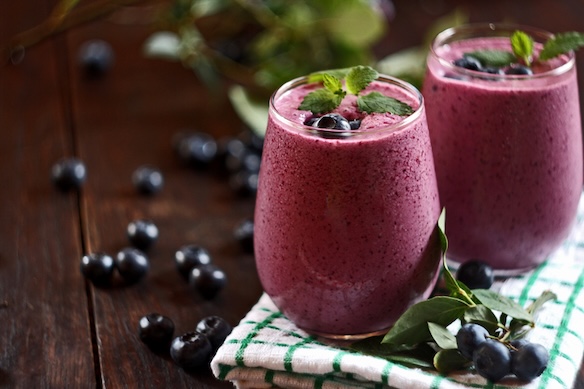A recent study found that approximately 40 percent of young adults experience insulin resistance, even without having diabetes.
Insulin resistance can lead to prediabetes which affects an estimated 84 million Americans aged 18 and older.
That’s why eating for insulin resistance can be so important.
But what is insulin resistance?
How does it develop?
What are the symptoms we should look out for?
And how can we eat a diet that keeps our blood sugar at healthy levels and helps to improve our insulin resistance?
In today's article, we’ll be answering all these questions. Keep reading to find out more about insulin resistance and certain diet tips to help you deal with it.
What is insulin resistance? How does it develop?
To understand insulin resistance, we first need to take a look at what insulin is.
Insulin is created in the pancreas. It’s a hormone that helps glucose in our blood enter other cells in our muscles, liver, and fat so our bodies can use that glucose for energy.
Glucose is the main sugar found in our blood, and it’s our body’s main source of energy. We get glucose from the foods we eat, and it’s also produced by our liver when required.
When glucose levels rise in our blood, the pancreas releases insulin to help glucose enter other cells and aids us in maintaining a normal range of blood glucose levels. Keeping a normal range of glucose is important because high levels can cause damage to our blood vessels, nerves, and even organs. Insulin works to prevent that.
This explains insulin and why we need it.
But what is insulin resistance, and what causes it?
Insulin resistance occurs when the cells in your muscles, liver, and fat can’t take up glucose from your blood effectively. These cells don’t respond well to insulin. As a result, your pancreas creates more insulin in hopes of offsetting this resistance from your cells.
So long as your pancreas creates enough insulin to counteract your cell's weak response, your blood glucose levels will stay in a healthy range.
But, if your cells become too resistant to insulin over time, it could lead to elevated blood sugar levels which can cause prediabetes and eventually Type 2 diabetes.
But, how does insulin resistance actually develop?
It’s still unknown exactly how insulin resistance happens. Some genes have been identified that may cause an increased likelihood of its development, and older aged people might be more susceptible.
It’s thought that excess body fat and a lack of physical activity could be two main contributing factors to insulin resistance.
What are the symptoms of insulin resistance?
If someone has insulin resistance, but their pancreas is still managing to produce enough insulin to counteract the resistance, they won’t have any symptoms.
But if their insulin resistance gets worse with time, they can experience elevated blood sugar levels (hyperglycemia). Some symptoms of high blood glucose levels include:
- Frequent urination
- Increased thirst and hunger
- Slow-healing sores and cuts
- Blurred vision and headaches
- Skin and vaginal infections
It’s important to be aware of common symptoms of high blood sugar levels as it can help you take the proper precautions and get the help and diagnosis you need.
Diet tips for eating with insulin resistance
Because your diet can affect glucose levels, it’s important to know the foods to avoid and low insulin foods that may be more suitable to include in your diet.
When adjusting your diet due to insulin resistance, it’s important to reduce the consumption of simple sugars (simple carbs).
Some foods to avoid if you have insulin resistance include:
- Prepackaged and processed foods
- Simple carbohydrates like white rice and white bread
- Foods high in saturated fats like bacon, milk, and sausage
- Foods or drinks with added sugar like juices, sweets, and soda
It’s recommended that someone experiencing insulin resistance should eat a diet with whole grains and high amounts of non-starchy vegetables and raw fruits.
Non-starchy vegetables are full of fiber, minerals, and vitamins and they’re usually low in carbohydrates and sugar making them ideal for someone with insulin resistance.
Fruits are naturally higher in carbohydrates and sugars, but in their whole and raw form, they cause lower blood sugar spikes compared to candy or treats with added refined sugars. They also have plenty of essential vitamins, minerals, antioxidants, and fiber.
Some great vegetables and fruits you can add to your diet include:
- Kale
- Plums
- Onions
- Spinach
- Broccoli
- Peaches
- Tomatoes
- Cantaloup
- Asparagus
- Berries (blueberries, blackberries, etc.)
Fruits and vegetables are important components of any diet. But you also need a source of energy. And carbohydrates are a key source of fuel for keeping you going throughout the day.
But what are good sources of carbs for someone experiencing insulin resistance?
It’s best to aim to get your source of energy from complex carbs and whole grains. Some examples of whole grains and complex carbs include:
- Quinoa
- Brown rice
- Buckwheat
- Steel cut oats
- Whole wheat bread
We’ve talked about vegetables, fruits, and carbs - but what are some good sources of protein?
There’s evidence that saturated fats worsen insulin resistance. With this in mind, it’s best to avoid foods with high amounts of saturated fats and get your protein from lean meat sources. If you follow a plant-based diet, certain legumes and beans might be more suitable for you.
Some good sources of lean protein, legumes, and beans include:
- Trout
- Shrimp
- Lentils
- Poultry
- Lobster
- Scallops
- Chickpeas
- Egg whites
- Black beans
Avoiding unhealthy fats and working to ingest healthy fats is also crucial in maintaining a healthy diet with insulin resistance.
This study found that eating more unsaturated fats in place of saturated fats can improve insulin secretion and resistance and can even lower blood sugar levels.
Some healthy sources of fat include:
- Avocados
- Chia Seeds
- Extra virgin olive oil
- Nuts like almonds, cashews, and walnuts
- Butters from nuts like peanut butter and almond butter
Closing thoughts - Eating for insulin resistance
With 40 percent of the population dealing with insulin resistance to some degree, understanding what it is and how to eat to manage it is a key to maintaining and living a healthy lifestyle.
Whether you have insulin resistance yourself or have a loved one or coworker who deals with it, we encourage you to share this article with them so they can understand it better and learn the best types of foods to eat and avoid.











